Appalachia: Trump at Every Turn
- Aaron Schorr
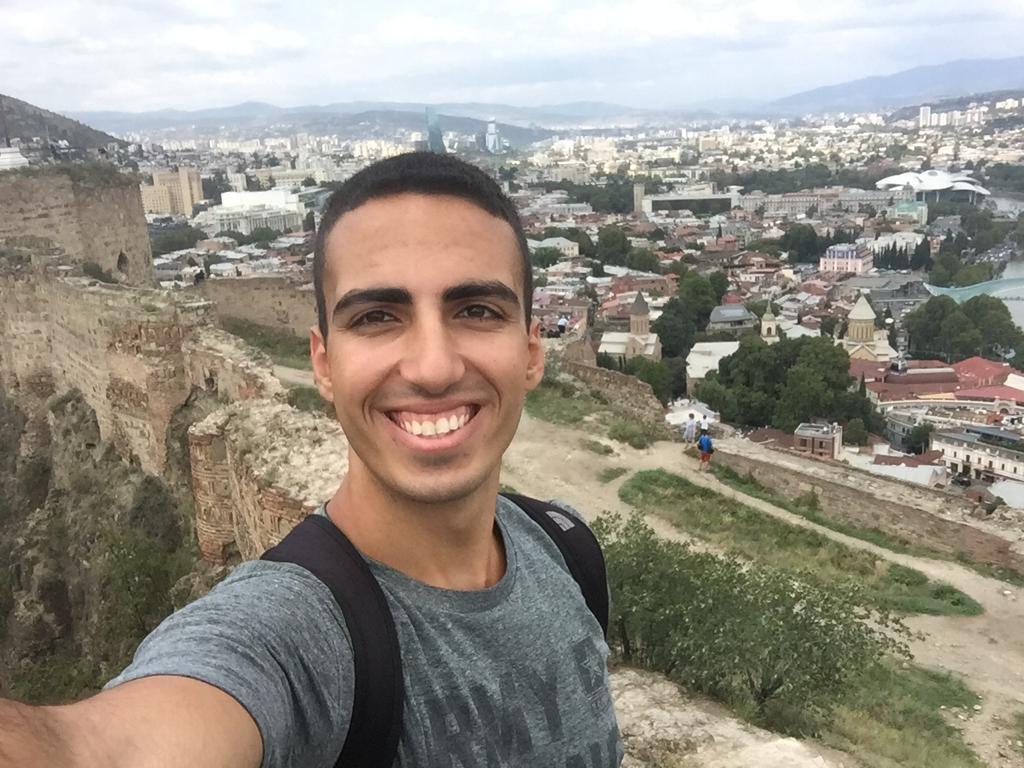
- Jan 11, 2021
- 6 min read
Waking up in D.C., our first stop of the morning was in Georgetown to charge, have breakfast at a delicious French bakery, and buy some much-needed cleaning supplies for the car. We then returned downtown towards Union Station, where we would be picking up our final passenger. Downtown D.C. was definitely gearing up for something big - the security cordon around the White House had been expanded to three blocks, making traffic absolutely miserable.

Vehicles decked out with Trump signs were milling about. There were pockets of Trump supporters with signs and floats in the cordon and I would hop out at red lights to take pictures of them. The most memorable group by a long shot was playing a MAGA rendition of “YMCA”, which was absolutely brutal to listen to.

Our passenger at Union Station was Richard, a friend of Jake’s and mine from New York who tipped the balance of Jews in the car back into the majority. He was rather surprised to find Shervin in the car with us, but we reassured him we wouldn't be seating five for long. We drove past the Capitol and across the Potomac to drop Shervin off at Terminal A of National airport, which he remarked looked “like an airport in Iran”. His flight was actually leaving in more than six hours, but he didn’t trust himself to take the train into town to pass the time there. The inability of privileged young Americans to use public transportation will truly never cease to amaze me. We said goodbye and left him to his long wait, 3 tennis rackets in hand.

After making a wrong turn and crossing the river back to D.C., twice, we drove south on I-95 (this was a first after many hundreds of miles heading north on it) into Virginia. For the first time since leaving Miami, we were driving through actual topography, with hills that got progressively larger and steeper as we departed the main highway and headed inland. Arriving in the outskirts of Charlottesville, we tried visiting Monticello, the home of Thomas Jefferson, but it was closed on Tuesdays. Heading towards town, we saw a sign for the Trump winery and made a spontaneous decision to go and visit, but this, too, was closed on Tuesdays. The views from the patio were stunning, however, and I didn’t miss the opportunity to give the Trump sign out front the same treatment he allegedly received from a Russian prostitute.
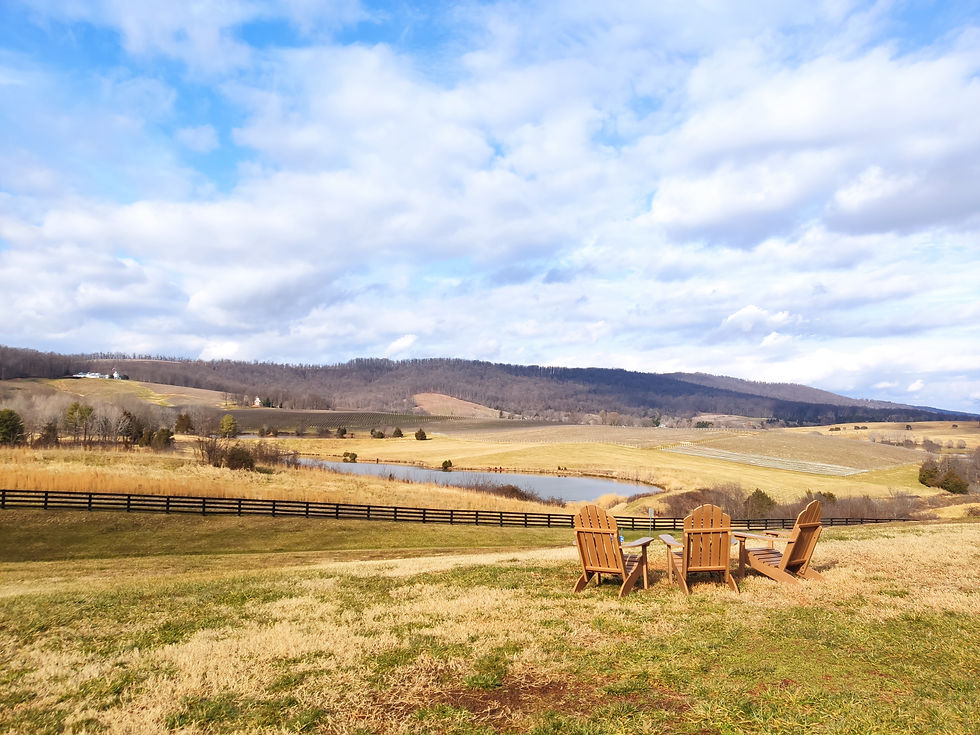
After arriving in Charlottesville, we walked around the rustic downtown and had lunch in a Southern restaurant with one of the most extensive whiskey menus I’ve seen in a long time. We visited a bookstore with an amazing map collection and a poster with the following title:

On the way back to the car, we passed the site where antisemitic white supremacists had run over and killed a woman during a demonstration in 2017 in one of the first traumatic events of the Trump presidency. We didn’t know it yet, but we were on the cusp of another.
Continuing west past Charlottesville, we arrived at the entrance to the Blue Ridge Parkway as the sun was going down. The parkway is a scenic road snaking over 450 miles down the Blue Ridge Mountains from Charlottesville to Asheville, NC. It links two national parks and has been the most visited site in the National Parks system almost every year since World War II, drawing enormous crowds every year for spectacular fall foliage (so of course we were visiting in January). We arrived later than planned due to a communications mishap with Richard, but the view as we entered the parkway was incredible.

We drove down 80 miles of beautiful, nearly empty roads, mostly during twilight but eventually in total darkness. We departed the parkway to descend US-60 into Lexington, VA, where we would be spending the night. We drove into town to have dinner at a Greek place near the Virginia Military Institute campus (recently mired in racial controversy), but the downtown was almost completely empty. It was there that we saw the highly troubling news from D.C., where terrorists had stormed the Capitol not 24 hours after we had been there.
Our hotel had a charger of its own, which was highly exciting since we didn’t have to waste time charging in the morning and could hit the road first thing in the morning. After making a wrong turn onto a dirt road to try and pass a very slow-moving truck, we found ourselves back on the parkway heading south. We stopped at a lake and a waterfall to stretch our legs and Richard and Akeel climbed up a hill on the opposite bank of the river. The road was beautiful during the daytime and still nearly devoid of traffic, allowing us to cruise freely down it.
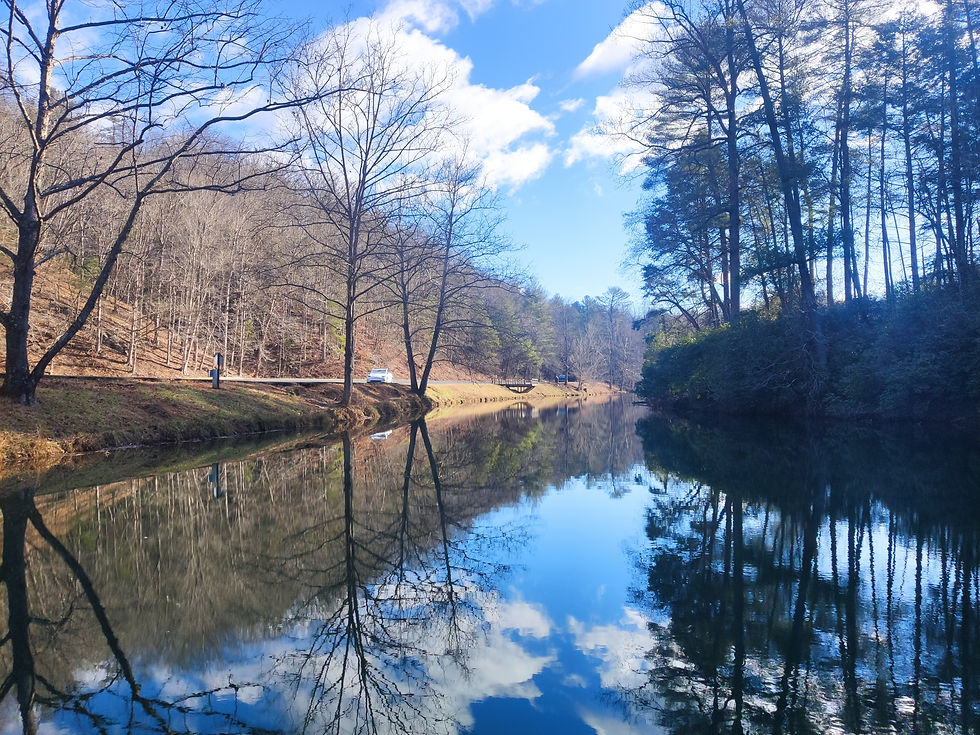
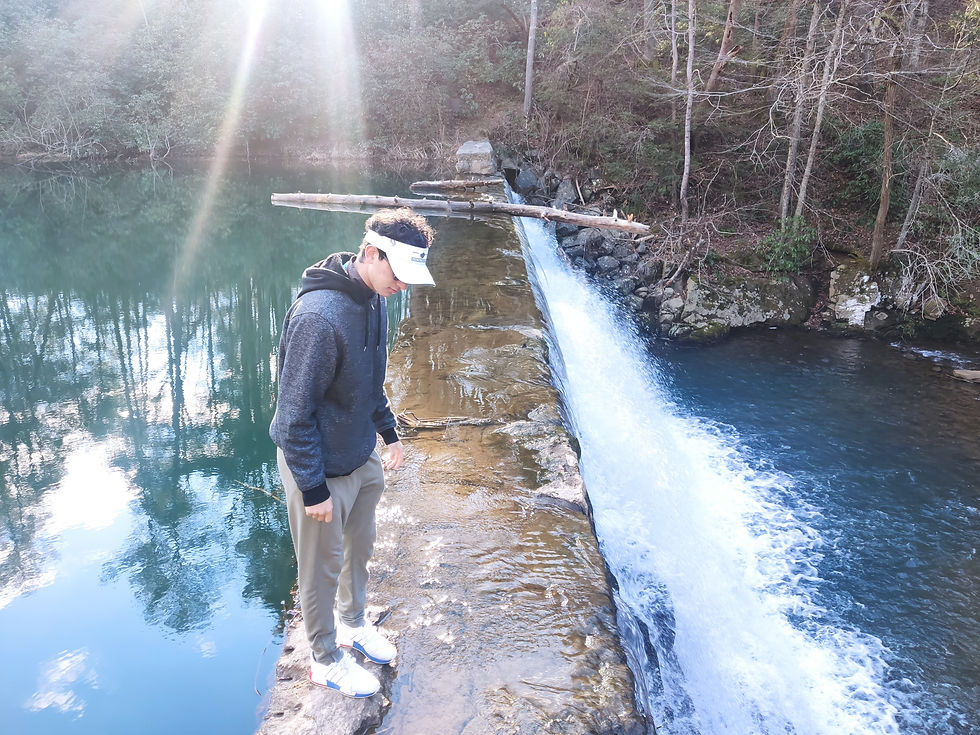
We stopped in Roanoke to charge and have lunch and pressed further south on the parkway. This section was less dramatic and much more inhabited, with lots of small farming communities near the parkway. We visited an old sorghum mill showcasing life in the Appalachians in the 19th century. Judging by how cold it was with the sun up, it must have been absolutely brutal. The mountains gradually got higher and the towns more sparse until we crossed the North Carolina state line, this time from the north. We stopped to charge in the town of Mount Airy, which was seemingly one of the only towns around not drawing its name from the Bible or Christian aesthetic. This deep in the Bible Belt, we were surrounded by such towns as Ararat, Beulah, Salem, Meadows of Dan, and Devotion. Being the Bible Belt, we also drove by the first school with actual kids in it we had seen on this trip. School speed limits had all but ceased to have any meaning to us.

To save time, we drove south on I-77 and then west on a major road to arrive in the ski town of Boone.We had considered spending the night on a farm further north, but we had made it to Mount Airy earlier than I had thought and didn’t want to leave too much driving for the folloing day. Boone was rather unattractive, so we continued down the road to the town of Blowing Rock, but not before seeing snow for the first time. Blowing Rock was a very touristy town, fitting the bill of an East Coast skiing town with mountains that weren’t terribly steep or high and minimal snow cover in January. It was, however, very cold, with temperatures dropping to 27˚ later that evening. In just 100 hours since leaving St Augustine, we had managed to lose 55˚ of temperature, moving from summer (Florida) to fall (coastal Carolinas) and finally winter (Norfolk onwards).
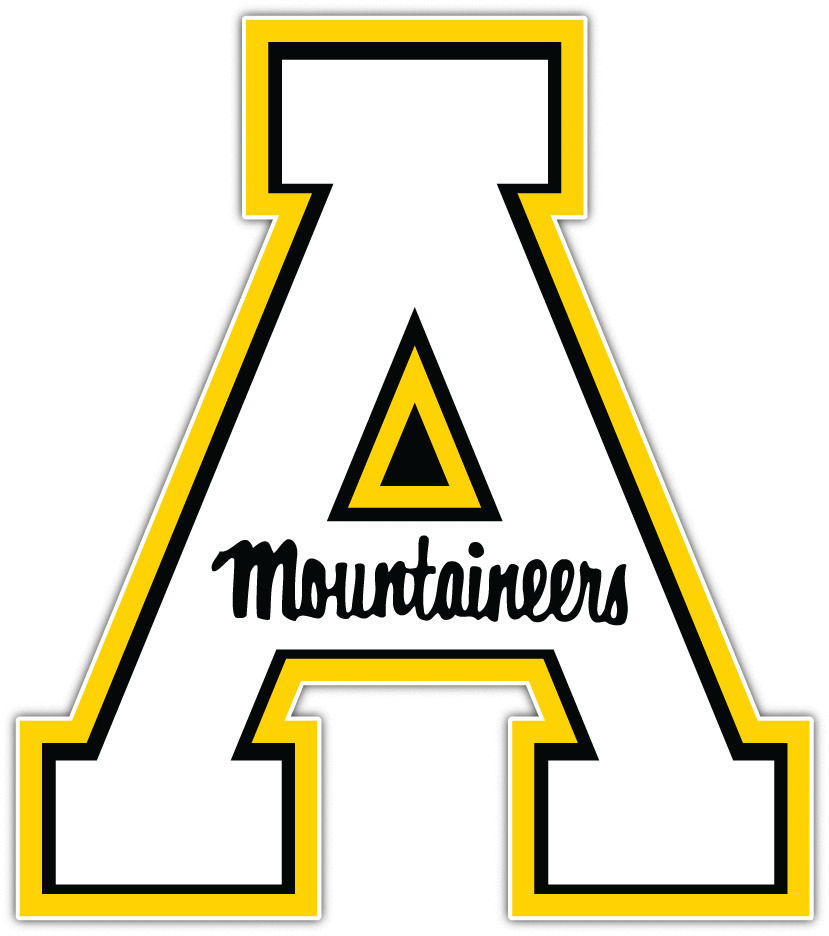
We had dinner at a barbeque joint in town that was incredibly cheap and where everyone was decked out in Appalachian State merchandise, representing the local university. Their logo is the letter A that is uncannily similar to Yale’s Y, but upside down, so much so that I made some double takes at the wait staff’s masks. Behind us was a table of locals (or so they sounded) discussing parallels between the storming the Capitol and “BLM protests where the police was told to stand down as looting happened.” Blowing Rock was incredibly white for a tourist town. So white, in fact, that the housekeepers at our hotel were all white, which I think might be a first for me in recent memory.
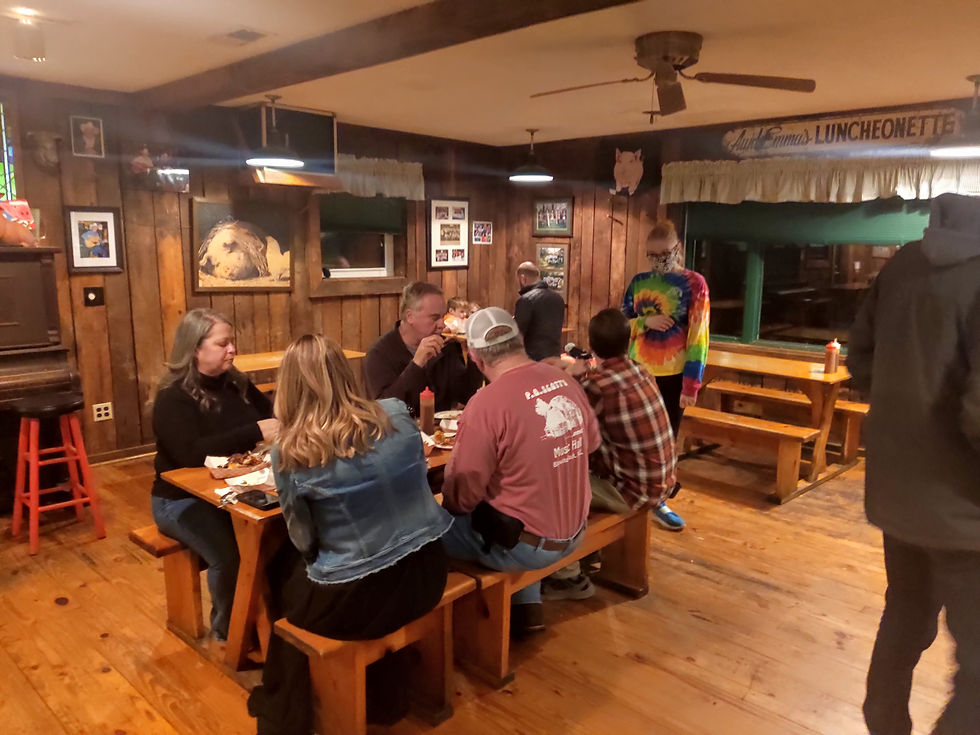
Our hotel was downright luxurious for the rock-bottom price we paid for it, and we spent the morning warming up in the pool after visiting a snowy playground - the town had received a light dusting overnight. Heading south out of town, we tried getting back on the BRP but the snow had closed it for traffic. This repeated several times as we continued south along the parallel US route, attempting at each crossing to rejoin the parkway and finding closed gates. Eventually we came across two men with accents as thick as syrup who told us the road was closed all the way to Asheville, which was as far as we were planning to take it, since the Park Service strangely doesn’t plow snow. Our Tesla made them laugh, and indeed it was rather puny in comparison to their oversized pickup trucks.
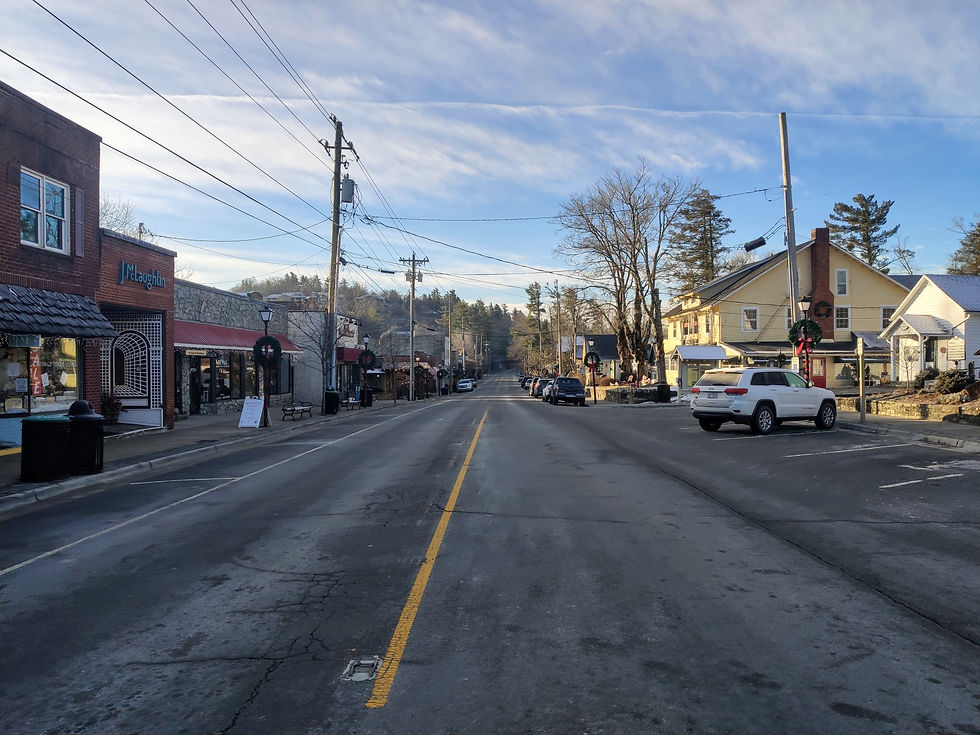
We ended up taking a different route through the mountains, one that took us through forgotten small towns and up a mountain pass with enough switchback turns to belong in the Alps, The asphalt ended at the top of the pass, but the Tesla performed like a champ on the dirt going down. The regenerative braking on this car is so good that the battery is often actually more charged at the bottom of a steep descent than at the top.
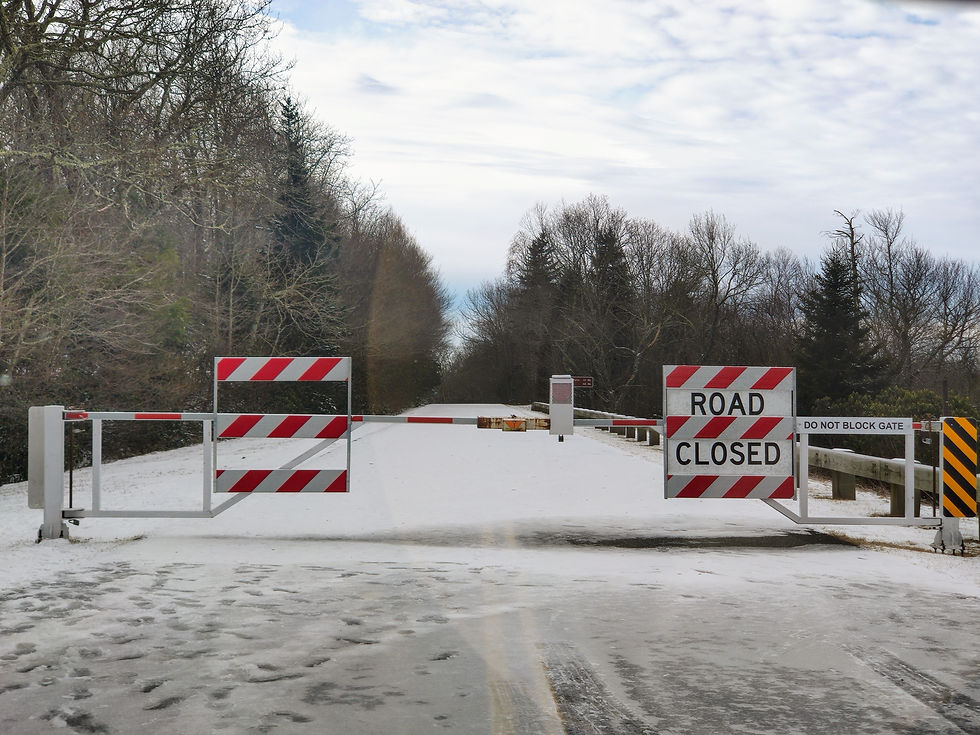
We arrived in Asheville and tried to visit Biltmore, the vast Vanderbilt estate at the edge of town. George Washington Vanderbilt visited Asheville in the 1880s and liked the scenery and climate enough that he decided to build a palace that would not be out of place in Bavaria, but apparently he didn’t leave enough money behind to maintain the place as admission tickets started at $100 and went up from there. Vanderbilt wasn’t the only Northerner to discover Asheville, however. The city is undergoing rapid gentrification, made very plain by the number of construction cranes and craft breweries in town. We stopped at a brewery for lunch, with a large group of identically-dressed women sat near us.
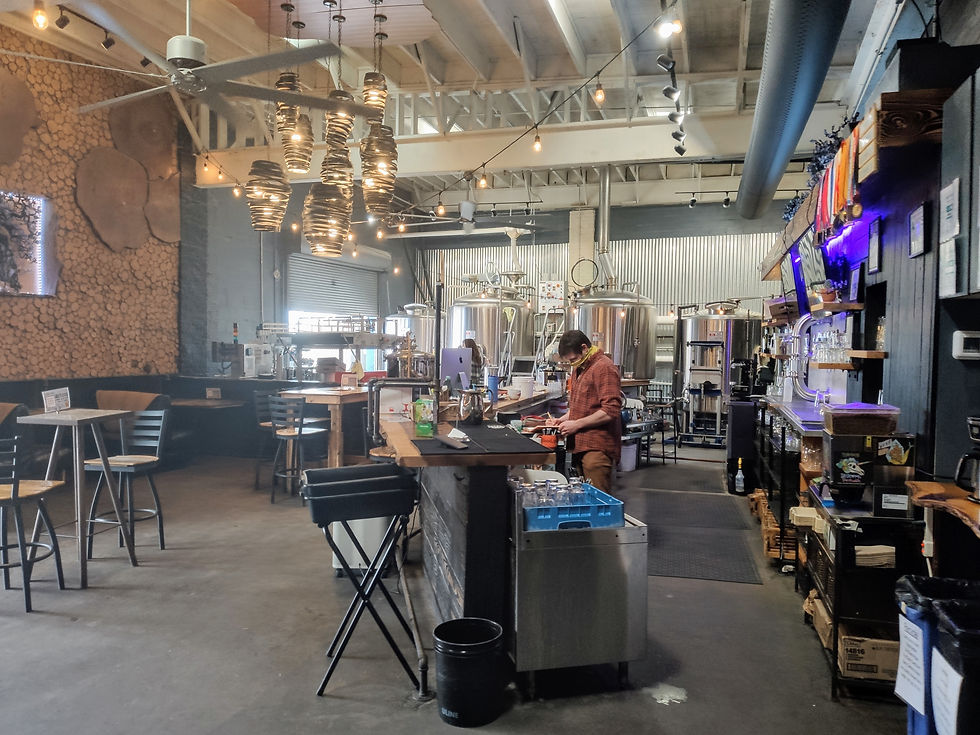





Unfortunately not :/
Can we see a picture of the identically dressed women?